Microorganisms for Healthier Plants
Blog, SoilUnlocking the Secrets of Soil Microorganisms for Healthier Plants
In the ever-evolving world of agriculture, the stakes have never been higher. With climate change threatening crop yields, soil quality declining, and food demand skyrocketing, the quest for sustainable solutions is critical. Enter Innovative Soil Microorganisms Techniques, a groundbreaking approach that promises to revolutionize the way we cultivate plants.
Soil microorganisms, including bacteria and fungi, are the unsung heroes of agriculture. They play a fundamental role in maintaining soil health and enhancing plant growth. These tiny organisms are involved in crucial processes such as nutrient cycling, organic matter decomposition, and forming symbiotic relationships with plants. By understanding their functions, we can harness their potential to improve agricultural productivity and sustainability.
For individuals passionate about gardening and agriculture, whether beginners or seasoned growers, understanding these techniques can transform their cultivation strategies. By harnessing the power of these microorganisms, growers can achieve healthier plants with improved growth and resilience. Plus, this approach aligns perfectly with the mission of Genetics Growers, a community dedicated to advancing knowledge in agriculture.
In this blog post, we’ll delve into the cutting-edge methods that leverage soil microorganisms for enhanced plant growth. We’ll explore how these techniques are being developed and applied, providing insights into their potential impact on modern agriculture. So, if you’re ready to unlock the secrets of soil microorganisms and cultivate a more sustainable future, read on!
Understanding the Role of Soil Microorganisms in Agriculture
Soil microorganisms, including bacteria and fungi, are the unsung heroes of agriculture. They play a fundamental role in maintaining soil health and enhancing plant growth. These tiny organisms are involved in crucial processes such as nutrient cycling, organic matter decomposition, and forming symbiotic relationships with plants. By understanding their functions, we can harness their potential to improve agricultural productivity and sustainability.
In the complex web of soil life, microorganisms are key players. They break down organic matter, releasing nutrients that plants need to thrive. This process is essential for maintaining soil fertility and structure. Moreover, microorganisms form symbiotic relationships with plant roots, enhancing nutrient uptake and providing resilience against environmental stresses. Let’s explore these roles in more detail.
Nutrient Cycling and Organic Matter Decomposition
Soil microorganisms are critical in nutrient cycling, a process that transforms organic matter into nutrients accessible to plants. Bacteria and fungi decompose dead plant and animal material, releasing essential nutrients like nitrogen, phosphorus, and potassium into the soil. This decomposition not only enriches the soil but also improves its structure, enhancing water retention and aeration.
Certain microorganisms enhance plant nutrition through symbiotic relationships. For instance, Rhizobium bacteria associate with the roots of leguminous plants, forming nodules where they transform atmospheric nitrogen into ammonia, which plants can readily absorb. Likewise, mycorrhizal fungi spread their hyphae through the soil, improving the plant’s ability to access water and nutrients—especially phosphorus—by expanding the contact surface with the soil. These interactions play a crucial role in maintaining fertile soil and supporting sustainable plant development.
Symbiotic Relationships with Plants
Many soil microorganisms form beneficial partnerships with plants. Mycorrhizal fungi, for instance, establish a symbiotic relationship with plant roots, forming structures known as mycorrhizae. These fungi enhance the plant’s ability to absorb water and nutrients, particularly phosphorus, which is often limited in soils.
In return, the plant supplies the fungi with carbohydrates produced during photosynthesis. This mutualistic relationship boosts plant growth and resilience, enabling them to withstand drought and disease. Studies have shown that mycorrhizal associations can increase crop yields by up to 30%, highlighting their importance in sustainable agriculture.
Impact on Soil Health and Agricultural Productivity
The presence of a diverse community of soil microorganisms is a strong indicator of soil health. Healthy soils are teeming with microbial life, which contributes to nutrient availability, disease suppression, and improved soil structure. This biodiversity is crucial for sustainable agriculture, as it supports plant growth and reduces the need for chemical fertilizers and pesticides.
Statistics indicate that soils rich in microorganisms can increase crop productivity by up to 20%. By adopting Innovative Soil Microorganisms Techniques, farmers can enhance soil health and boost agricultural output. This approach aligns with the mission of Genetics Growers, promoting sustainable practices and knowledge sharing among growers.
Understanding the role of soil microorganisms is essential for anyone involved in agriculture. By leveraging their natural abilities, we can improve soil health, increase crop yields, and contribute to a more sustainable future. Explore more about these fascinating organisms and their applications in agriculture on Genetics Growers.
Innovative Techniques Leveraging Soil Microorganisms
In the realm of modern agriculture, Innovative Soil Microorganisms Techniques are reshaping how we cultivate plants. These techniques tap into the natural power of soil microorganisms to enhance plant growth and resilience. By leveraging cutting-edge advancements in microbial inoculants and biofertilizers, farmers and gardeners can achieve healthier plants while reducing reliance on chemical inputs.
Recent research has unveiled a plethora of technological innovations in microbial applications. These advancements are not only fostering plant health but also contributing to sustainable agricultural practices. Let’s dive into some of the most promising techniques that are transforming the agricultural landscape.
Advancements in Microbial Inoculants
Microbial inoculants are at the forefront of agricultural innovation. These products introduce beneficial microorganisms into the soil, enhancing nutrient availability and plant growth. Recent studies have shown that inoculants like Rhizobium and mycorrhizal fungi can significantly boost crop yields by improving nutrient uptake and soil health.
One exciting development is the use of aptamer-based technology to track the fate of microbial inoculants in soil. Researchers from CREA have developed this technology, which allows precise monitoring of inoculants’ persistence and effectiveness. This innovation ensures that the introduced microorganisms adapt well to the soil environment, maximizing their benefits for plant growth.
Biofertilizers: A Sustainable Alternative
Biofertilizers are gaining traction as a sustainable alternative to chemical fertilizers. These products harness the power of microorganisms to fix atmospheric nitrogen, solubilize phosphorus, and decompose organic matter, enriching the soil naturally. The use of biofertilizers not only enhances soil fertility but also reduces environmental pollution.
Recent advancements in biofertilizer formulations have improved their efficacy and shelf life. For instance, innovations in fermentation processes have led to the creation of multifunctional bioinoculants that support plant growth under various stress conditions. These biofertilizers are proving to be invaluable tools in promoting sustainable agriculture.
Case Studies and Expert Insights
To illustrate the impact of these innovative techniques, consider the case of a farm in California that adopted microbial inoculants and biofertilizers. The farm reported a 30% increase in crop yields and a significant reduction in chemical fertilizer use. This success story highlights the potential of soil microorganisms to revolutionize agricultural practices.
Experts in the field emphasize the importance of ongoing research and collaboration to further refine these techniques. By integrating microbial solutions into traditional farming practices, we can enhance plant resilience and productivity, paving the way for a more sustainable future.
For those interested in exploring these techniques further, Genetics Growers offers a wealth of resources and community support. Join the conversation and discover how you can harness the power of soil microorganisms for healthier plants.
Challenges and Future Prospects in Microbial Techniques
As the agricultural industry increasingly turns to Innovative Soil Microorganisms Techniques, several challenges and future prospects emerge. These techniques promise to enhance plant growth and resilience, yet their implementation is not without hurdles. Regulatory, environmental, and practical considerations play a significant role in shaping the trajectory of these microbial methods.
Understanding these challenges and exploring future prospects is crucial for stakeholders in the agricultural sector. By addressing these issues, we can unlock the full potential of soil microorganisms and pave the way for a more sustainable agricultural future.
Regulatory and Environmental Challenges
The regulatory landscape for microbial techniques is complex and varies by region. In many areas, the introduction of microbial products requires rigorous testing and approval processes. This can be a barrier for innovation, as the time and cost involved in gaining regulatory approval can be prohibitive for smaller companies and researchers.
Environmental challenges also pose significant concerns. The introduction of non-native microorganisms into ecosystems can disrupt local microbial communities, potentially leading to unforeseen ecological consequences. It’s essential to conduct thorough environmental impact assessments before deploying these techniques on a large scale.
Practical Considerations and Adoption Barriers
From a practical standpoint, the adoption of microbial techniques faces several barriers. Farmers and growers may lack the knowledge or resources to implement these methods effectively. Training and education are crucial to ensure that these techniques are applied correctly and yield the desired benefits.
Additionally, the variability in soil types and environmental conditions can affect the efficacy of microbial techniques. What works well in one region may not be as effective in another, necessitating tailored approaches and localized research to optimize outcomes.
Future Prospects and Emerging Trends
Despite these challenges, the future of microbial techniques in agriculture is promising. Emerging trends such as advanced genetic engineering and precision agriculture are set to revolutionize how we utilize soil microorganisms. These technologies can enhance the effectiveness and adaptability of microbial techniques, making them more accessible and impactful.
Experts suggest that ongoing research and collaboration across disciplines will be key to overcoming current barriers. By integrating microbial solutions with other sustainable practices, we can create a holistic approach to agriculture that maximizes productivity while minimizing environmental impact.
For those interested in staying at the forefront of these developments, Genetics Growers offers a wealth of resources and community support. Join us to explore the latest innovations in soil microorganisms and their applications in agriculture.
Harnessing Microbial Power for Sustainable Agriculture
The journey through Innovative Soil Microorganisms Techniques has revealed the transformative potential of these microscopic allies in agriculture. As we’ve explored, soil microorganisms like bacteria and fungi are pivotal in nutrient cycling, organic matter decomposition, and forming symbiotic relationships with plants. These functions not only improve plant growth and resilience but also contribute to sustainable agricultural practices.
By adopting these techniques, farmers and gardeners can significantly enhance soil health and boost crop yields. The implementation of microbial inoculants and biofertilizers showcases how leveraging the natural capabilities of soil microorganisms can reduce reliance on chemical inputs, align with environmental sustainability, and increase agricultural productivity. This aligns with the mission of Genetics Growers to promote innovative cultivation strategies.
Looking forward, the challenges of regulatory frameworks, environmental assessments, and practical adoption must be addressed to fully realize the benefits of these techniques. However, the future is promising with advancements in genetic engineering and precision agriculture paving the way for more effective and adaptable microbial solutions. The integration of these techniques into traditional farming practices can lead to a more resilient and sustainable agricultural system.
Key Takeaway: Soil microorganisms are essential for nutrient cycling and plant resilience.
Actionable Insight: Implement microbial inoculants to enhance soil health and reduce chemical dependency.
Future Prospect: Stay informed about advancements in microbial techniques for sustainable agriculture.
If you’re eager to delve deeper into these techniques, we invite you to explore more resources on our website, Genetics Growers. Join our community to share experiences, learn from fellow enthusiasts, and stay at the forefront of agricultural innovation. Together, let’s unlock the potential of soil microorganisms for a healthier planet.


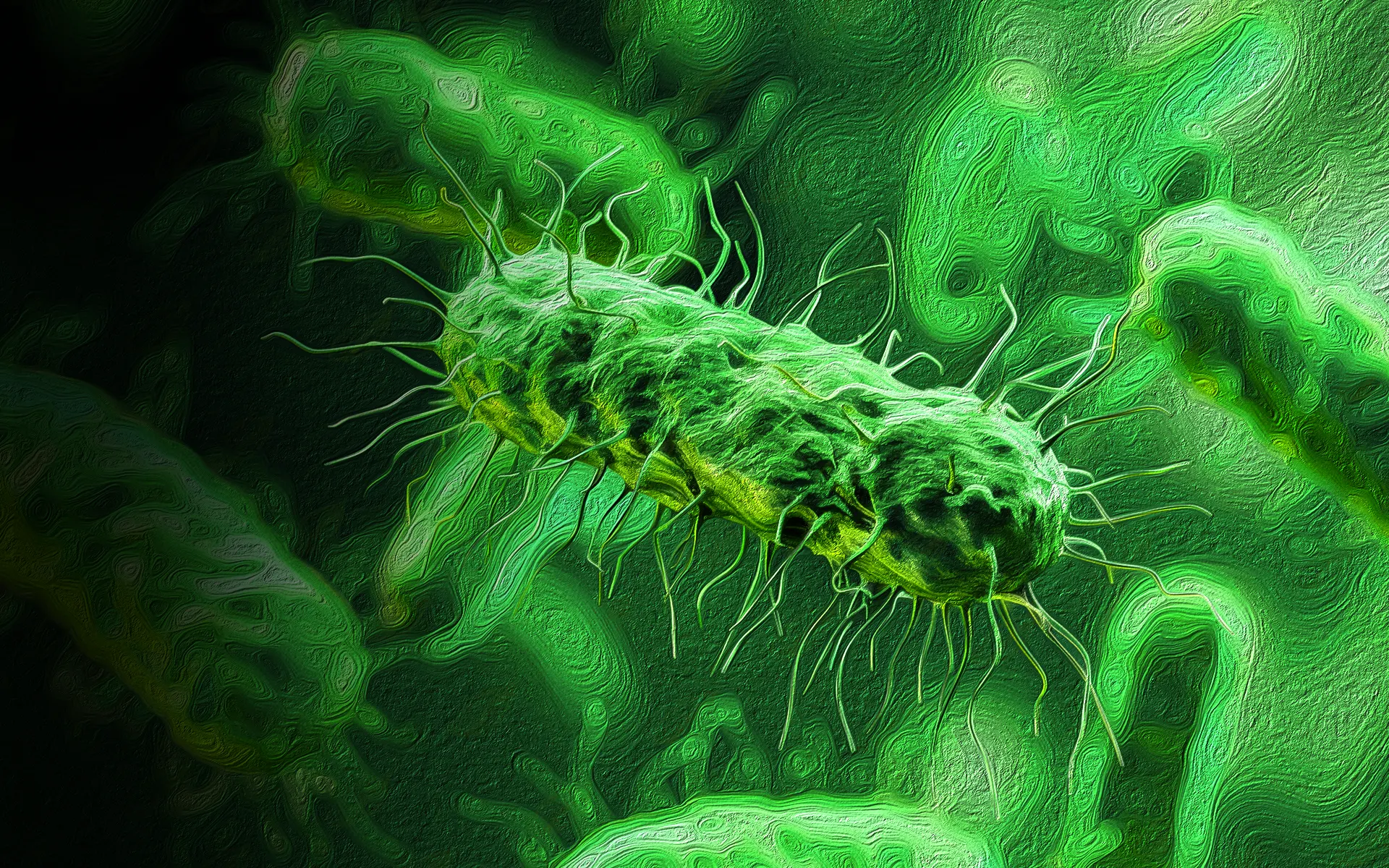
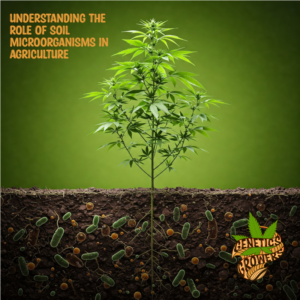
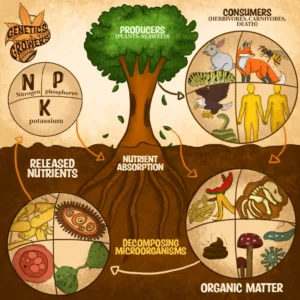
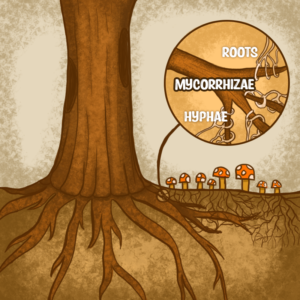
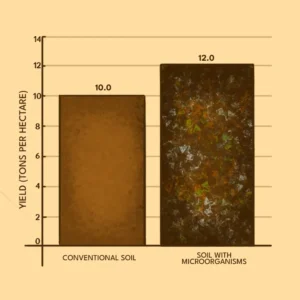
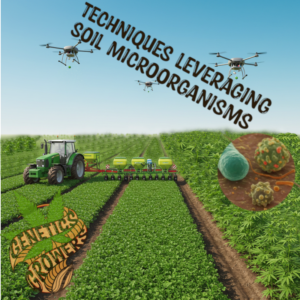
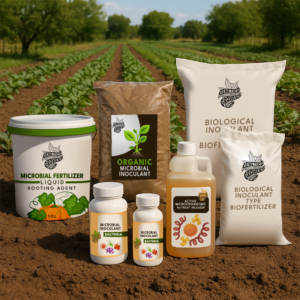
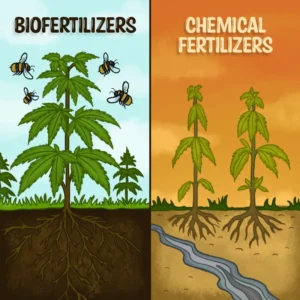
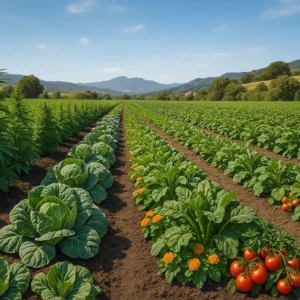
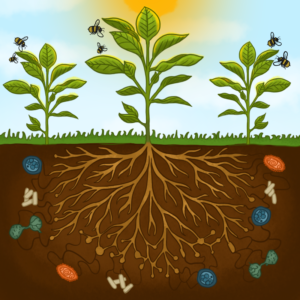

Es interesante como hay literalmente un mundo debajo de nuestros pies! Me encantó este artículo y la importancia de tener buenos microorganismos en nuestros jardines y cultivos. Me encantaría probarlo en mi jardin de interior.
It really is fascinating, isn’t it? 🌱 In nature, size doesn’t always reflect significance. Tiny organisms like mycorrhizal fungi, microbes, and even single-celled algae can have a massive impact on plant health, nutrient cycles, and the overall balance of ecosystems. They’re like the backstage crew making sure the whole botanical performance runs smoothly.